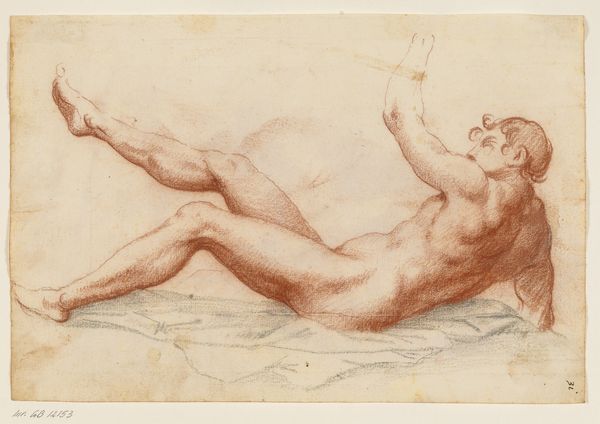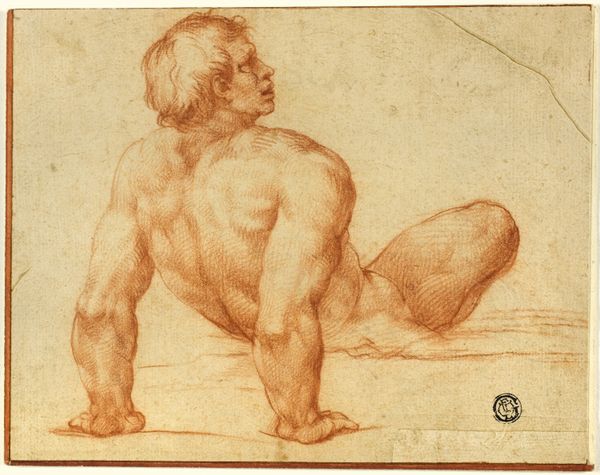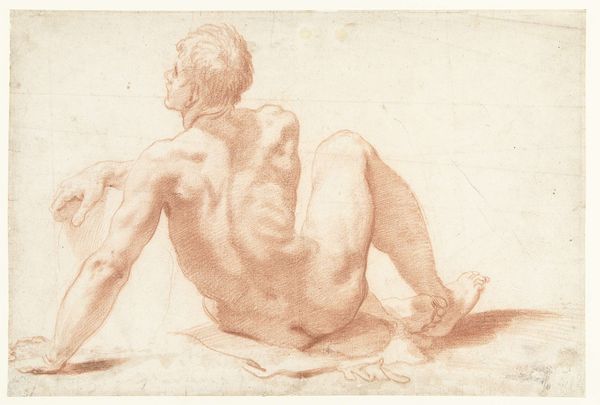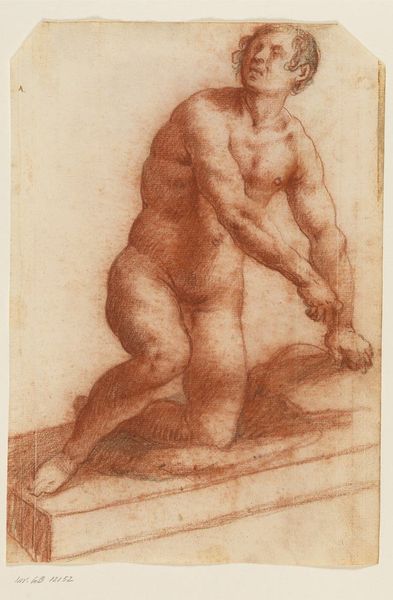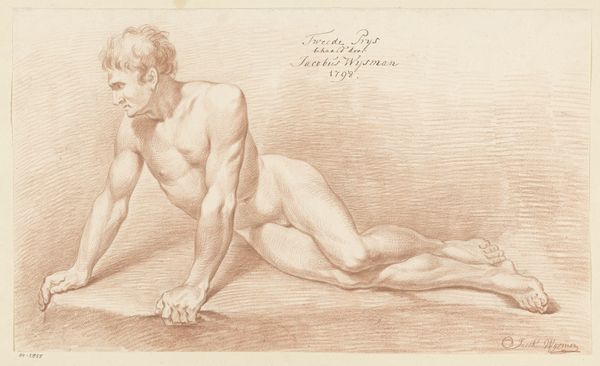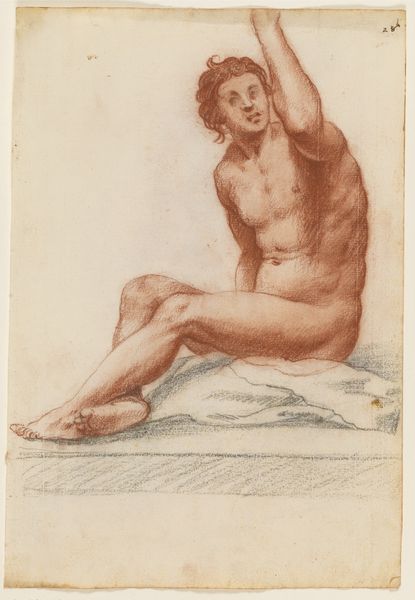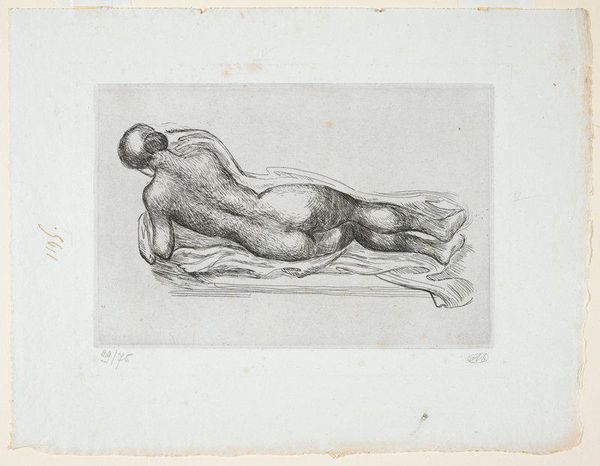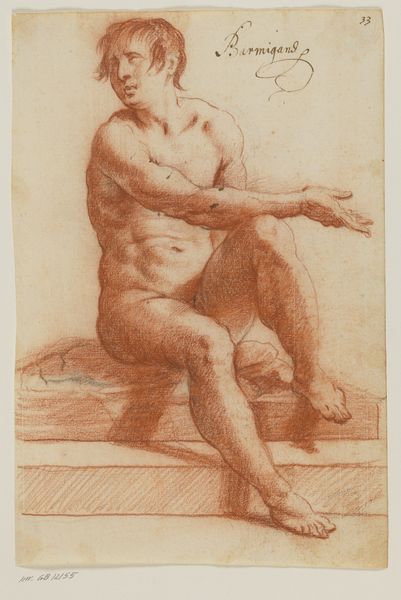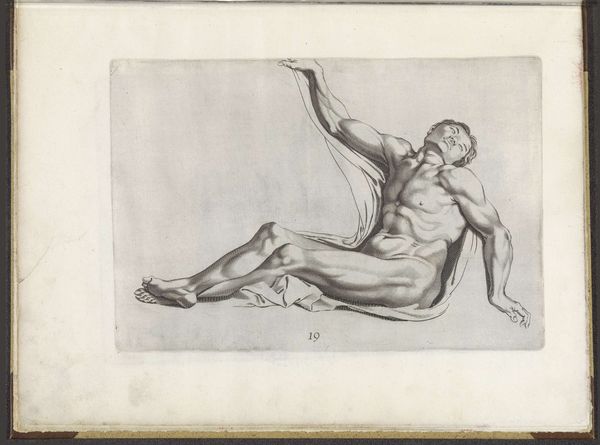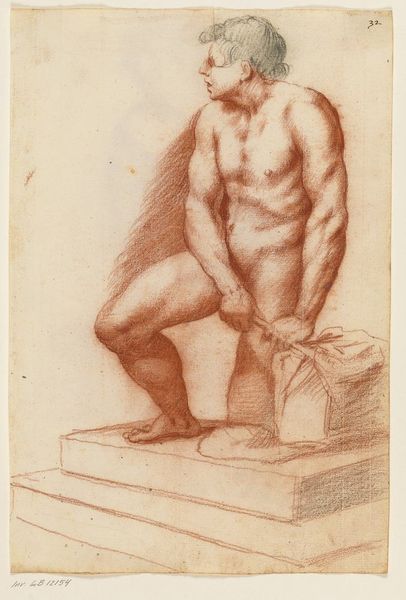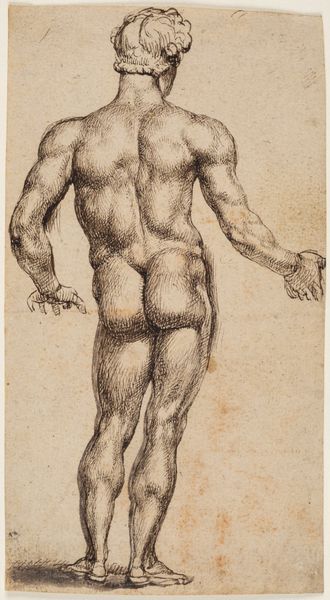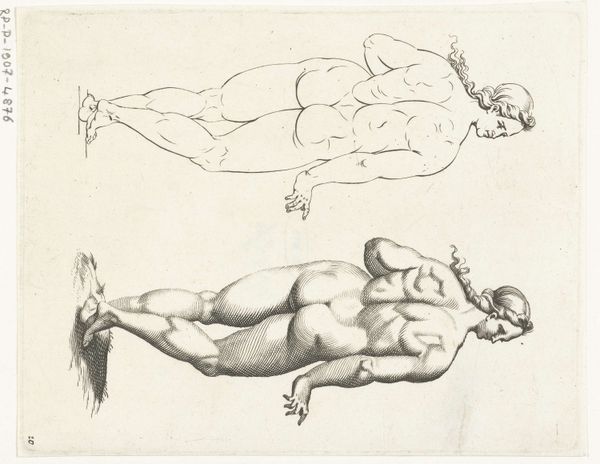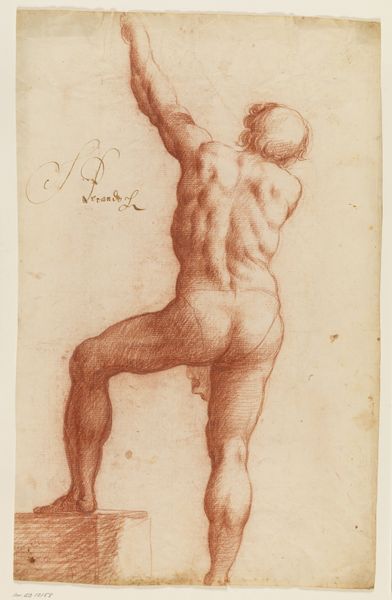
Prostrated male nude turned to the left and seen from behind 1600 - 1624
0:00
0:00
drawing, pencil
#
drawing
#
charcoal drawing
#
11_renaissance
#
pencil drawing
#
pencil
#
nude
Dimensions: 287 mm (height) x 403 mm (width) (bladmaal)
Curator: Here at the Statens Museum for Kunst, we have a striking nude drawing rendered in pencil and charcoal. It's titled “Prostrated male nude turned to the left and seen from behind," made sometime between 1600 and 1624 by an anonymous artist. Editor: Immediately, it's the figure’s tension that grabs me. He seems caught between relaxation and a held, strained pose. Sort of an elegant wrestling match with gravity. Curator: Yes, the interplay of relaxation and tension is skillfully rendered. Look at the use of line; observe how it defines the contours of the back and the distribution of weight in the arms, anchored against that geometric form underneath. Editor: That block... it's interesting, isn’t it? It’s not exactly a bed, but a stage of sorts. Makes you wonder what the setting is, and why he’s positioned just so. Curator: One might even interpret this staged position as a deliberate act of display, of revealing and concealing the human form simultaneously, a recurring theme within renaissance art. Editor: Revealing through concealment… I like that! It feels so true to how we all are, presenting certain angles while hiding others. Is there an undercurrent of vulnerability here, perhaps? Curator: The artist has managed to convey just that, focusing attention to both anatomical accuracy and to an internal emotional landscape, don't you agree? The raking light and choice of media lend an immediate sensuality, but on a closer look there is a powerful element of emotional introspection too. Editor: Absolutely! It's this tension that gives the piece a soulful quality. It isn't just anatomy; it's the anatomy of feeling too. It shows just how much the way a body sits or lies can actually speak. Curator: Precisely. And what appears like a traditional nude, upon deeper consideration, is actually about so much more than the simple depiction of a body. Editor: Right. We get a glimpse into something essential and true through the simple arrangement of ink, charcoal, paper, and line. Beautiful, simply beautiful.
Comments
No comments
Be the first to comment and join the conversation on the ultimate creative platform.
